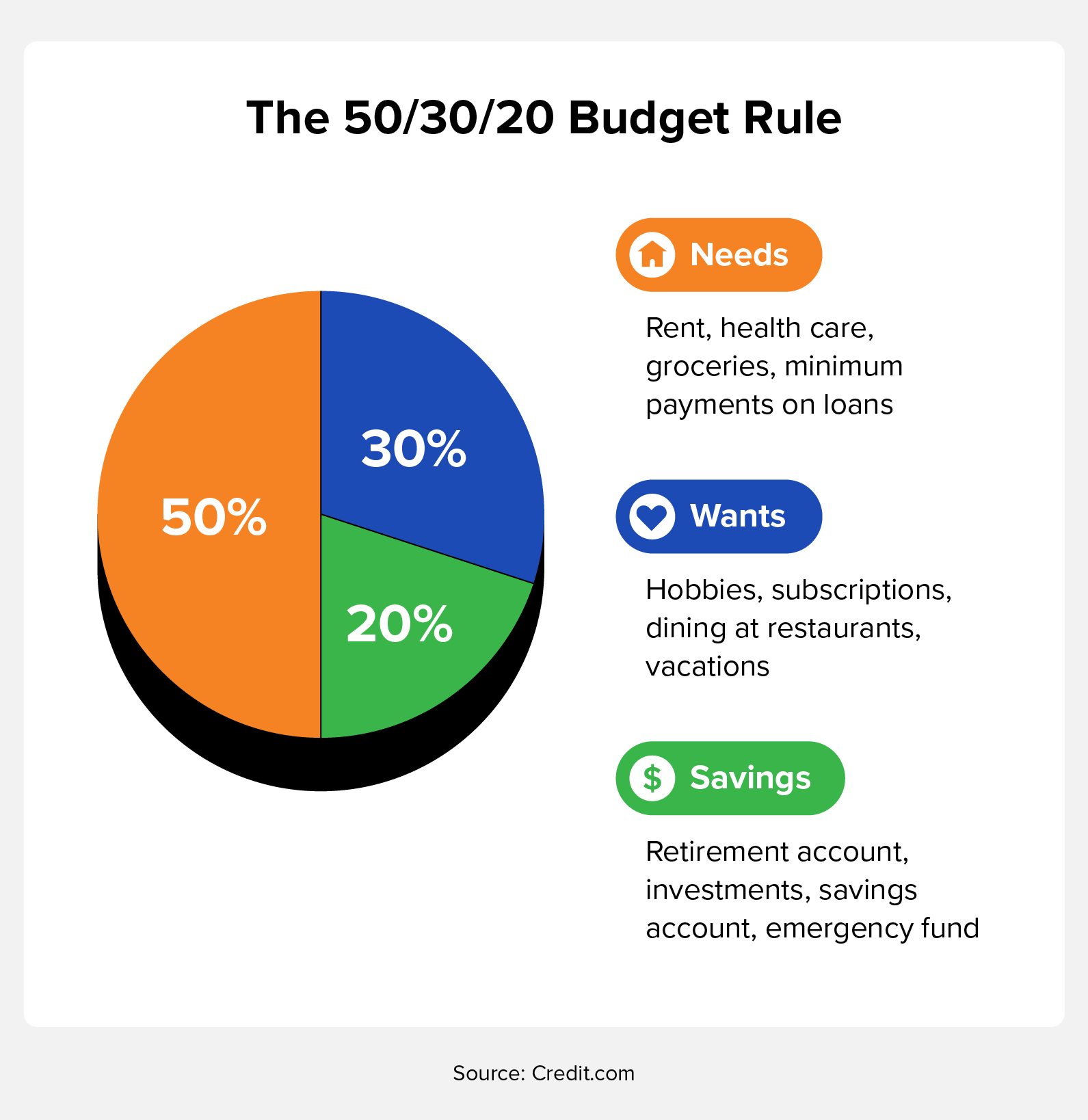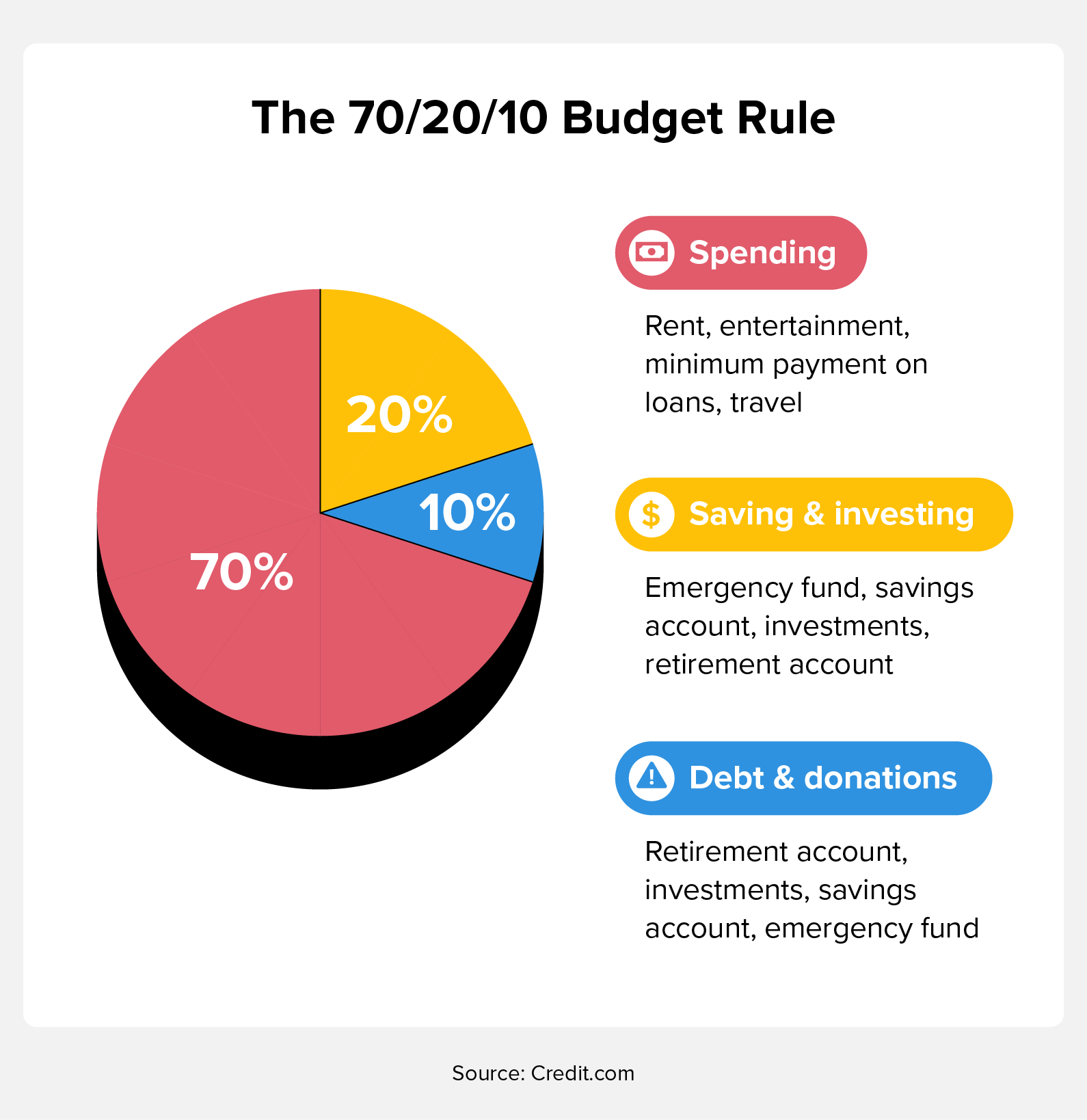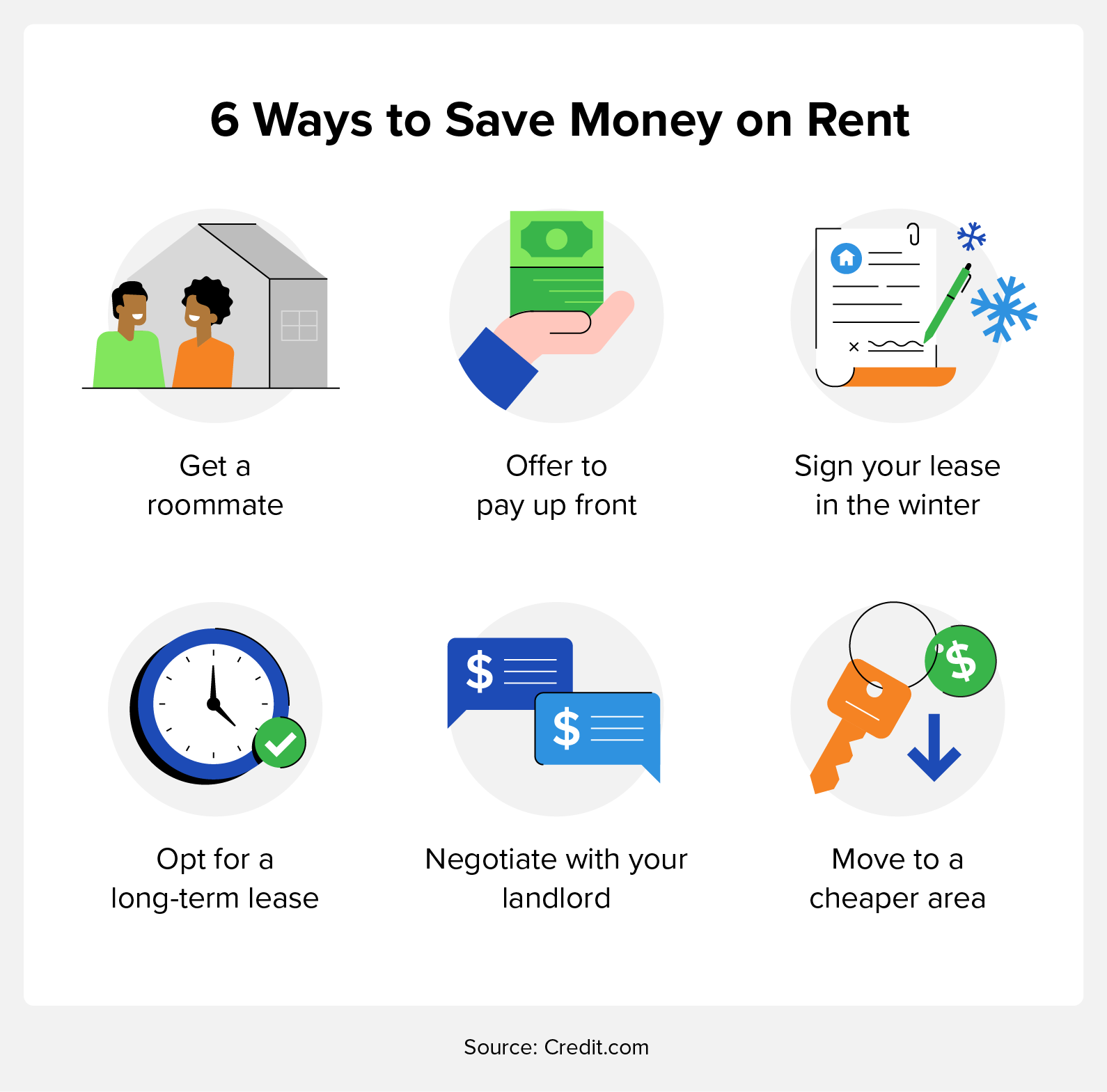
Many or all of the products featured here are from our partners who compensate us. This may influence which products we write about and where and how the product appears on a page. However, this does not influence our evaluations.
Generally, you should aim to spend under 30% of your gross monthly income on rent.
Table of Contents
If you’re looking for a new place to live, odds are you’ve browsed hundreds of rental listings and apartment complexes in your area. While searching for a rental can be overwhelming, there are steps you can take to narrow down your search. The first step—setting your budget. Read on to discover how much to spend on rent.
How Much Rent Can I Afford?
While there isn’t a clear-cut answer for how much money to spend on rent, financial experts have created multiple guidelines to help you create your monthly budget. Here are a few options to consider:
1. 30% Rule
The most popular method for determining how much of your income to spend on rent is the 30% rule. According to this rule, you should allocate no more than 30% of your monthly gross income to your rent. If you’re using only 30% of your income on rent, you have the other 70% to allocate to your other living expenses, debt repayment and savings.
To calculate your rent budget based on this rule, take your yearly income and multiply it by 0.3, then divide by 12. For example, if your yearly salary is $60,000, you should aim to spend $1,500 a month on rent.
Reference the chart below for an overview of the 30% rule at different income levels.
|
Gross Annual Salary |
Estimated Maximum Monthly Rent |
|
|
|
|---|---|---|---|---|
|
$25,000 |
$625 per month |
|||
|
$50,000 |
$1,250 per month |
|||
|
$75,000 |
$1,875 per month |
|||
|
$100,000 |
$2,500 per month |
|||
|
$125,000 |
$3,125 per month | |||
|
$150,000 |
$3,750 per month |
Keep in mind that this method might not be feasible for everyone to follow, especially in places like New York City, San Francisco, and Boston where rent is extremely high. For example, the average monthly rent in New York City is $5,600, meaning you would need an annual salary of at least $224,000 to follow the 30% rule.
If you live in a high-cost city and find this rule unrealistic for your scenario, you may want to consider following a different budgeting technique.
2. 50/30/20 Rule
The 50/30/20 rule is a technique that divides your after-tax income into three categories—50% toward needs, 30% toward wants and 20% toward savings. This method isn’t as straightforward since rent is a part of the broader “need” category.
Let’s walk through a step-by-step example to determine your rent budget according to the 50/30/20 rule:
- Step 1: Determine 50% of your monthly income: If your monthly take-home pay is $6,000, then allot $3,000 per month toward needs.
- Step 2: Add up your other expenses in the “needs” category: Other expenses in the “needs” category include minimum payments on loans, groceries, health care, car payments, and utilities. In this example, let’s say each month you spend $500 on groceries, $100 on health insurance, $150 on utilities, $20 on credit card bills, and $500 on a car payment, which totals $1,270.
- Step 3: Subtract the other “needs” expenses from the total “needs” budget to determine your monthly rent: To determine your rent budget, you would subtract $1,270 from $3,000, which equals $1,730.
If, after using this template, you find that your rent budget is lower than you’d prefer, you can lower your other “needs” expenses to allot more money toward your rent budget. For example, you could get a more modest vehicle, shop at a more affordable grocery store, or take steps to lower your utility bill.

3. 70/20/10 Rule
Similarly to the 50/30/20 rule, the 70/20/10 rule divides your post-tax income into three different categories. With this technique, 70% goes to spending, 20% to saving and investing and 10% to debt repayment and donations. With this rule, rent is a part of the “monthly spending” category.
Here’s how to calculate your monthly rent budget according to the 70/20/10 rule:
- Step 1: Determine 70% of your monthly income. If your take-home pay is $6,000, allocate $4,200 to the “spending” category.
- Step 2: Add up your other monthly spending expenses: Let’s estimate that you have the same “needs” expenses as the example above, which total $1,270. Your monthly “wants” budget includes $250 on eating out, $200 on clothing shopping, $85 on a gym membership, $200 on entertainment, and $300 on travel. Your total monthly spending would equal $2,305.
- Step 3: Subtract your monthly spending expenses from the 70% spending budget to determine your monthly rent budget: To determine your budget, you would subtract $2,305 from $4,200, which equals $1,895.
With this rule, you may have more wiggle room to increase your rent budget by cutting down spending on your wants. For example, you could reduce the frequency of eating out or spend less money on clothes to grow your rent budget.

Other Factors to Consider
Remember that there isn’t a one-size-fits-all approach to how much to spend on rent. When deciding between different rental options, consider how the following factors may add additional costs or offer savings opportunities:
- Location: Consider the distance to places you frequent and how that might affect costs. For example, you might find that rent is $100 less further out of the city. However, if you drive to the city for work every day, gas money might eat at your cost savings. Not to mention the additional time it adds to your commute.
- Amenities: Consider what amenities the apartment offers that could save you money on other parts of your budget. For example, an on-site gym could save you approximately $75 monthly on a separate gym membership.
- Remote work: If you work from home, you might put your transportation cost savings toward your rent budget to allow additional space for a home office.
- Utilities: Some landlords include utilities in the rent price, while others don’t. Since the average electric bill is $137, it’s important to take this factor into account.
- Internet and cable: Consider whether your rent includes internet and cable. Some complexes may require you to purchase an internet and cable package.
How to Save Money on Rent
Due to rising rent costs across the U.S., staying within your rental budget can be a challenging task. Consider the following tips to save money on rent:
- Get a roommate: As of February 2023, the average monthly rent for a one-bedroom apartment in the U.S. is $1,152, while the average rent for a two-bedroom apartment is $1,320, which means getting a roommate can save you $492 a month.
- Sign your lease in the winter: Studies have shown that December through March are the cheapest months to sign a lease due to decreased demand during the winter season.
- Negotiate with your landlord: If you’ve been a reliable tenant or have a strong rental application, you may be able to negotiate your rent. Keep in mind that you’ll likely have more luck negotiating with an independent landlord than a property management company.
- Offer to pay upfront: If you have enough savings, offer to pay a few months to a year of rent up front in exchange for a discount.
- Opt for a long-term lease: Many landlords prefer long-term tenants and will offer lower rates if you sign a longer lease.
- Move to a cheaper area: Generally, rent is more expensive in cities compared to rural or suburban areas. However, If you want to live in an urban area, consider opting for a smaller, more affordable city like Tulsa, OK, rather than a large city like New York, NY.

Budgeting techniques like the 30% rule, the 50/30/20 rule, or the 70/20/10 rule can provide you with a guideline of how much of your income to spend on rent. Additionally, looking for ways to save on rent can help you reach your other financial goals.
Now that you’ve determined your rent budget, credit score is another factor to consider when apartment searching. Landlords and property managers will likely perform a credit check to help determine your ability to pay rent. Generally, your credit score should be in the “good” range (670 or above) to improve the odds of your applications getting approved. While you can get an apartment with bad credit, you might have to jump through additional hoops.
Unsure what your credit score is? Check your credit score for free today to make sure you’re ready to sign a lease.
You Might Also Like
April 17, 2023
Budgeting and Saving Money
April 3, 2023
Budgeting and Saving Money
March 8, 2023
Budgeting and Saving Money




![Average Electric Bill by State [2023]](https://www.credit.com/blog/wp-content/uploads/2024/10/average-electric-bill-hero.webp)

